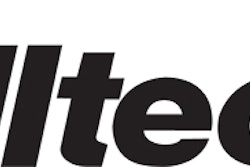
2021 has arrived, and with it new ways of looking at the pet food industry. 2020 wrought significant changes on the way everyone does business, thanks to the COVID-19 pandemic, and 2021 is going to be all about adaptation and innovation in moving forward.
As we do every January, Petfood Industry spoke with experts across all segments of the pet food industry — from ingredients to packaging, from market data analysts to brand specialists — and we asked: What is 2021 going to look like? What trends need to be at the front of everyone’s minds? The top two answers are highlighted here, packaged with plenty of insights and advice on how to not only survive the rebuilding 2021 will necessitate, but to thrive into 2022 and beyond. Let’s take a look:
Sustainability/traceability: pet owners are looking for mission-driven companies

Petmal I iStock.com
“Ingredients that fit into the categories of traceability, sustainability and responsible sourcing as well as the science to support their use will be the new imperatives. Where do these ingredients come from, where are they processed or manufactured, how sustainable are they? The pandemic has raised the awareness that we need to take care of people, pets, animals and the planet. Ingredients that meet these needs will be given more consideration regardless of whether they are of plant or animal origin.” – Juan Gomez-Basauri, Ph.D., global director; Alltech
“Because there is a growing awareness that our resources are not endless and that climate change is a reality, we will see a huge increase of sustainability messages linked to brands. Sometimes only the messages, but also in actions taken for the brand and its products. I expect a lot of controversy and misunderstanding, and companies believing that being sustainable is a unique selling proposition instead of a value that drives the brand and the company. [I expect] polemics and lawsuits galore on the short run because there are still too many definitions of sustainability, each of which is subject to multi-interpretation.” – Marcel Blok, owner; Change Stranamics BV
“Sustainability remains a primary concern for pet owners, with preferences for natural, clean ingredients as driving factors in their pet food choices. Pet owners will prioritize brands that hold sustainability as a purpose. When it comes to pet food, 90% of pet owners want transparency on what is in the product they are feeding their pet. They know what they’re looking for — or want to avoid — and carefully scrutinize the ingredient lists and labels on pet food products.” – Rikke Sakstrup Frandsen, industry business manager; Ashlee Martin, senior application specialist; Chr. Hansen
“Sustainability and the reduction of the carbon footprint is going to be measured throughout the entire supply chain in the pet food industry, and I think in 2021 you’re going to see more of an inward look in how we approach sustainability. You’re going to see more companies saying: We know now that we need to do something; how do we look? How do we measure up? There’s going to be a lot of self-evaluation starting with the suppliers, and going through manufacturing, processing, packaging and distribution. And I think newer demographics are expecting it. Generation Z is going to look behind the curtain and support companies that have strong ESG (Environmental, Social and Governance) plans, and aren’t just saying they’re green but are actually good stewards of the environment. And I think packaging’s going to play a prominent role in that.” – Todd Meussling, senior manager, market development; Fresh-Lock
“[Two of the] top three trends I’m seeing in packaging are: continued momentum for recyclable polyethylene packaging structures as a potential alternative to industry standard polyethylene/polyester laminates; and the growth in demand for post-consumer recycled content to be incorporated into flexible plastic packaging options. As the industry commercializes polyethylene/polyethylene laminated structures for their enhanced recyclability potential and incorporates post-consumer recycled content into flexible plastic packaging, our challenge is to provide this enhanced sustainability without asking manufacturers to compromise shelf presence and production efficiencies.” – William Kuecker, vice president of marketing; Mondi Consumer Packaging
“Sustainability will play an important role in the years to come. For example, pet food makers may be increasingly challenged to consider new packaging options that can still uphold the integrity of the food or treat inside. At Pet Food Institute (PFI), we’ve learned that so many pet food makers have a positive sustainability story, whether it’s zero-waste facilities, reduced water use and even the benefits of using by-products to avoid competing with the human food supply. 2021 will be another year where companies can continue to find new ways to discuss their sustainability efforts and continue innovating to meet new needs.” – Dana Brooks, president and CEO; Pet Food Institute
“The pandemic and social unrest of 2020 clearly heightened attention on all businesses to become more socially responsible and sustainable, and the pet industry is no exception. We believe consumer demand for brands to show that products are made in environmentally and socially responsible ways will continue to grow. Consumers increasingly want greater detail on what is in the bag and how it was made. This includes a spectrum of topics, from labor rights (How are workers in meat packing and rendering plants treated?) to environment (What is the carbon footprint of the food? What type of protein is better for the environment?).” – Melissa Bauer, director of sustainability; Pet Sustainability Coalition
“The research shows that Gen Z and Millennial populations are the new pet owners since the pandemic. These consumers are more interested in sustainability in comparison to older generations. I think these generations are what will drive change and innovation in the pet market in 2021 by demanding sustainable consumables (sustainably sourced proteins) and non-consumables (sustainable packaging, organic, cruelty-free products). Label claims like locally sourced, sustainably sourced, ethically raised, fair trade and grass fed resonate with consumers; use of the whole animal (organs, cartilage, etc.) is more environmentally friendly. Innovation in sustainable protein through plant-based proteins (algae and duckweed protein) and insect protein [will grow].” – Amy Kerr, director of business development; SPINS
“Shoppers have shown they are willing to pay more for sustainable packaging and convenience features like handles and stay-fresh zippers. In a 2019 study of premium pet food purchasing trends, almost 75% of respondents said they ‘felt more favorably toward a brand with sustainable packaging.’ Forty-five percent of consumers said they’re making more sustainable choices when shopping and will continue to do so. Consumers are becoming more aware of end-of-life scenarios for packaging materials and they want to be part of the solution for a greener environment.” – Rebecca Casey, senior vice president of marketing and strategy; TC Transcontinental Packaging
E-commerce/the digitization of pet food: the time for a plan is now

E-commerce has proved to be the winner in pet food during the pandemic. | Prostock-studio I Shutterstock.com
“[One of the top trends] is a continued push toward everything being digital in the pet food environment. Obviously e-commerce has been the big winner from the pandemic as everyone tries to stay away from others and shop from the convenience of home, so there’s been huge growth in digital and e-commerce sales. I think a lot of that is going to be sticky in terms of the convenience and the time savings benefit they get from shopping online. But it’s not just e-commerce; I think in general just the digitization of health and pet food nutrition more generally. We see a lot of these customized food start-ups … a level of hyper-customization. I think the continued digitization of the space will only further that push into pet food.” – Jared Koerten, head of pet care research; Euromonitor International
“I think the new retail landscape is going to be one of the big challenges. They’ve obviously gone toward e-commerce as the future, and they were all investing in e-commerce, but I think there’s still a lot to be said for the role in store merchandizing and shopping habits played with pet food. People were, when they went to their neighborhood pet store, very open to explore, and sample and spend time with their pet at the store, and discover new products. In this new online environment, if people have gone into 2020 and they’ve done subscribe and save, they’ve done set and forget, they get their automatic food shipment once a month … they might still go to the pet store on occasion to pick up a new leash or a one-off purchase, that’s still a reality, but I think the number of trips is going to potentially be less because food is the big driver of those trips. When that migrates online, a lot of those in-store elements become less prevalent. I think it’s going to be a bit of a challenge to rethink new ways to engage with pet owners when they’re not in the stores as often, and I think you’ll see a lot more focusing on digital engagement tools with pet owners.” – Jared Koerten, head of pet care research; Euromonitor
“As a result of COVID-19, direct-to-consumer brands saw a huge advantage in 2020 with consumers looking to limit their time shopping outside the home. While it’s possible that some consumers may swing back to purchasing their pet’s food in stores, many will continue to embrace the convenience and benefits of having food delivered to their front door. At FONA, we’ve seen a big increase in projects for direct-to-consumer customers, especially with refrigerated and frozen pet food manufacturers who are looking to get a natural flavor and palatability edge over the competition.” – Melissa Hartley, senior market manager; FONA International
“My big prediction for 2021 is that the trend to buy online will grow further, which means brands and packaging will need to work extra hard to attract and convince buyers. This was definitely a trend before the pandemic, but the last 10 months have proven that it is essential for pet food manufacturers to become more innovative. We have been learning so much from our restaurant client over the past 10 months. First came the total shutdown because of the virus. Then partial openings, now closed for dining again, but open for take-out. We shifted marketing strategies throughout it all. Right now everything is targeted again to directing marketing (including the packaging for the take-out foods) to online sales; every ounce of effort goes toward that. Packaging stickers, inserts, social media and digital ad campaigns are grabbing and directing consumers to online ordering for free delivery and the safety of eating at home. The same thing can play out for pet food, channeling efforts toward those online sales and convenient and safe shopping.” – Stefan Hartung, co-founder/creative; Kick
“COVID-19 has changed the way consumers and businesses operate and will likely leave a lasting impact on our lives for years to come. From a consumer perspective, we have seen an increase in e-commerce and curbside demand, as well as a desire to shop local and support independent retailers. Many of our retail partners have shifted to curbside pick-up, which allows consumers to pick up purchases without ever having to leave the comfort of their car. This is just another example of the many ways businesses are adapting to the new COVID-19 landscape.” – Issac Langleben, co-founder and CEO; Open Farm
Top trend #3: Health and wellness in the pet space

Yuttana Jaowattana I Shutterstock.com


















